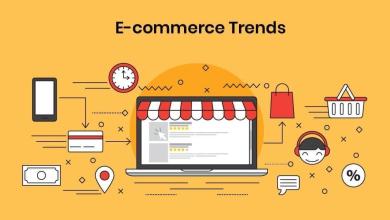
10 KPIs for Multichannel Success
KEY PERFORMANCE INDICATORS (KPI) are the critical metrics of a business. KPIs can identify strengths and weaknesses — successes and failures — to help a company succeed for the long term.
This article will review 10 KPIs for multichannel retailers — those that sell on a website, marketplaces, and physical locations.
1. Traffic
Is your website getting traffic? Where is your traffic coming from? How are you using that traffic? Analyze and optimize each traffic source, such as organic and paid, because it likely represents different customers.
Organic traffic comes from your own content: blog posts, YouTube videos, social media, and similar. Affiliate marketing is also a form of organic traffic. Paid traffic includes ads on Google, Facebook, and Instagram, as examples.
For all traffic sources, try to determine if the visitors are repeat or new.And look closely at your bounce rate, the percentage of visitors that leave quickly — less than 60 seconds for a retail ecommerce site. A high bounce rate — typically 40% or more — indicates low engagement. Discontinue or adjust traffic sources that generate high bounces.
2. Conversion Rate
Are the traffic sources to your ecommerce site driving sales? The conversion rate is the percentage of visitors that purchase your goods or services. A good target for retail ecommerce is rate is 2% — total traffic to total purchases — although it varies greatly by industry.
To increase your conversion rate, remove the barriers to purchase. Driving visitors to a home page and then expecting them to click to a product page, add an item to the cart, and check out — that’s a lot of barriers where shoppers can drop off. Shortening those steps can help.
Optimizing product pages can help, too. An optimized product page can achieve 50% or more conversions with the right traffic. The offer, the copy, the checkout steps — all impact conversions on a product page.
Related to conversions is the add-to-cart rate. Are visitors adding to the cart and not completing the purchase? Cart abandonment tools can follow up with visitors who abandon carts, to finish transactions.
3. Domain Authority
Domain authority is a measure — from 1 to 100 — of a website’s relevance and influence in an industry or topic. The higher the domain authority, to more likely the site will rank prominently in search results. Thus optimizing DA is critical for organic search traffic. Moz, the search engine tool, developed domain authority, but other tools such a Ahrefs have followed with similar metrics.
A target DA for retail ecommerce is 50 and higher. Monitor the DA of competing products and companies to ensure yours is equal or higher. A score of 100 is near impossible for most commercial sites.
Factors that affect your site’s domain authority rank are its number of relevant keywords and links from other authoritative sites. Quality content is key to both.
4. Customer Acquisition Cost
Customer acquisition cost is the next KPI. How much does it cost to acquire a customer? It’s critical for paid traffic. CAC varies by industry, products, and marketing channel. A good CAC is typically half of your average order value (addressed below). So knowing the channels that generate the lowest CAC is essential.
The marketing efficiency ratio is the percentage of advertising spend that drives revenue. It, too, is an important metric. Traffic sources with a high MER are the priority.
5. Average Order Value
Average order value is total revenue divided by total customers for a given period. It’s the average sale amount per customer. AOV informs advertising spend and CAC. For example, an AOV of $50 could likely justify a $20 to $25 CAC to break even. Many companies, especially in the subscription space, track the number of orders a customer will typically generate in a short period, allowing the companies to increase the acceptable CAC.
Offering product bundles can increase AOV, as can upsells and cross-sells. A post-checkout upsell, for example, is a proven revenue generator for some brands, who offer discounted goods that must be purchased within, say, five minutes of the original transaction. Third-party tools can help manage post-purchase promos.
6. Customer Lifetime Value
Customer lifetime value is an estimate of the total purchases from a given shopper in a set time, such as 18 to 24 months. It’s an imperfect metric but important nonetheless. Retaining customers is critical for the long-term success of retail brands. The higher the lifetime value, the lower the CAC and the better chance of success. For many merchants, acquiring customers is relatively easier than retaining them. Thus the CAC-to-LTV ratio is an indicator of projected profitability.
7. Payback Window
The payback window is the length of time to recoup customer acquisition costs, not from revenue but profits. It’s a raw, quick metric. For example, a payback of eight months across two orders is excellent and warrants additional spend in that marketing channel.
8. Product Control
Product control is an understanding of your sales channels and their inventory requirements. Optimized product control ensures all customers receive what they want quickly. How much inventory do you have? Where is it allocated? Where does it reside — your warehouse, a marketplace, someplace else?
The customer fulfillment rate is the percentage of orders that are picked and shipped. Tracking the fulfillment rate by channel can inform inventory allocation.
Inventory age can be important for certain industries, such as food and beverage. Monitoring inventory age will prevent outdated goods from being shipped to buyers.
Knowing the replenishment time by channel is also critical. How long does it take you to restock inventory — from manufacturer to warehouse?
9. Revenue
All of the KPIs above lead to revenue. How much money are you bringing in? Which channels drive the most revenue? A customer might learn of your products in a brick-and-mortar store or and then purchase them on your website. Or buy initially on a marketplace.
Try to design your packaging to encourage direct purchases on your site so that you control the customer relationship. The ultimate revenue source is direct: on your own website or physical location.
10. Gross Margin
Gross margin (or gross profit). Are you making any money? Is the sales channel profitable or, alternatively, an acquisition vehicle? Are physical-store sales profitable?
Optimizing the cost of goods sold can dramatically improve profits — from raw materials to manufacturing to shipping to various warehouses.
Knowing the profit percentage by channel will inform where to direct resources, to increase the high performers and discontinue the losers.




